Gallery Network
7 Questions for Sam Ghantous on Bringing Uncomfortable Perspectives to Art and Design
YveYang Gallery is presenting Ghantous's recent video work in the Film section of Art Basel Hong Kong.
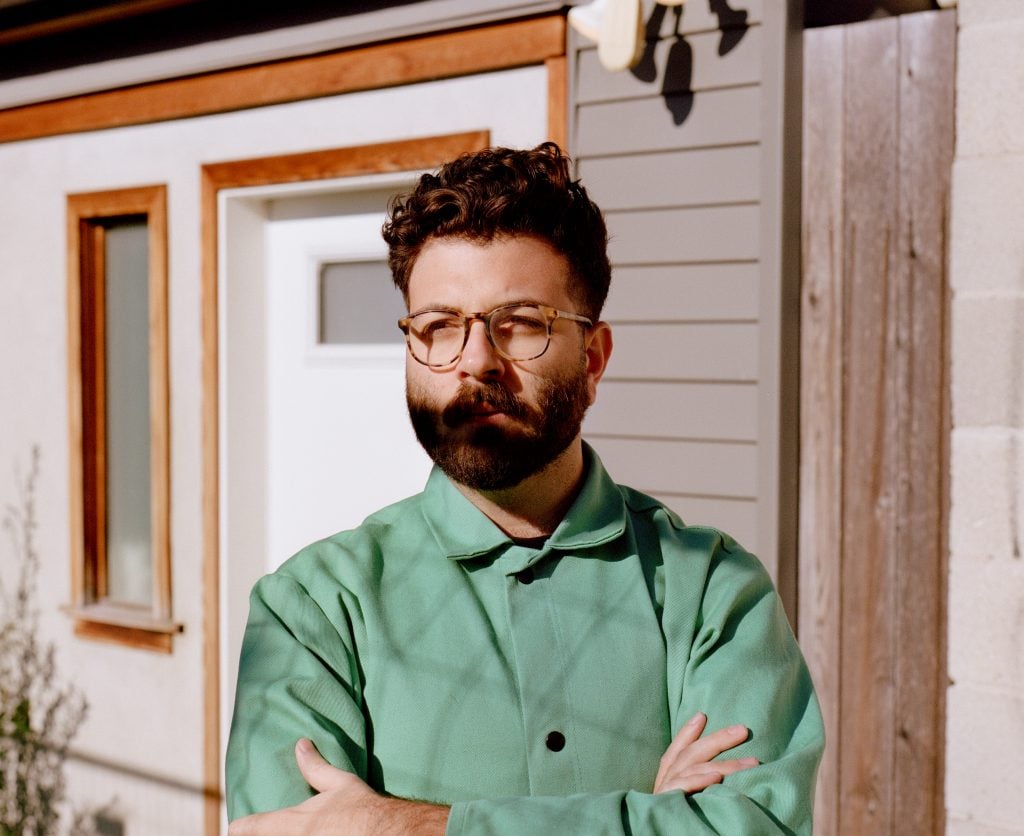
YveYang Gallery is presenting Ghantous's recent video work in the Film section of Art Basel Hong Kong.

Artnet Gallery Network

The Oman-born, Zurich-based artist Sam Ghantous (b. 1989) is a true multi-hyphenate: artist, architect, designer, teacher, and co-founder of Foreign Objects, a multidisciplinary design and research studio. Exploring and experimenting with techniques from across disciplines and mediums, including the Internet, architecture, and video games, Ghantous composes works that blur the boundaries between physical and digital space.
Presented by YveYang Gallery of New York, Ghantous’s video piece Work-Space Portrait (2021) will be shown in the film section of Art Basel Hong Kong, which is curated by Zhenhua Li.
We reached out to Ghantous to learn more about the work on view, as well as about how he approaches his multidisciplinary practice.
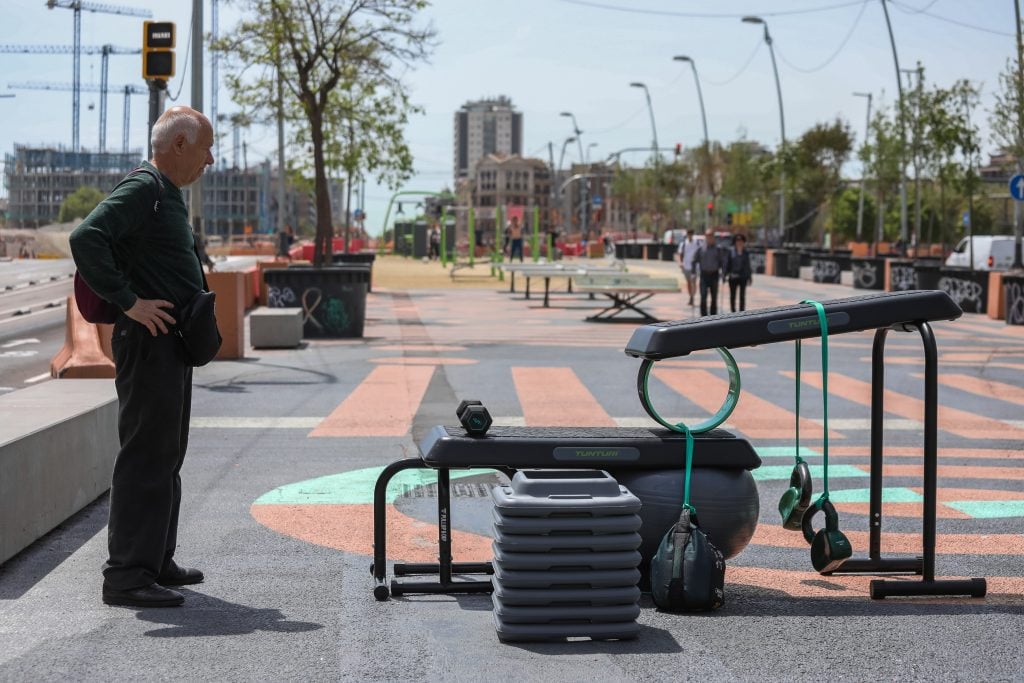
Sam Ghantous, Work, Work-Out Station (2022) at Model+ Festival in Barcelona. Photo: Anna Mas. Courtesy of the artist and YveYang Gallery, New York.
Tell us a bit about your background—has art and art making always been part of your practice?
A crucial part of my background is my migratory childhood, moving between seven countries. I kept myself occupied in solitary ways by drawing, composing songs on the computer, making animations, and printing publications. Tools like software or the Internet could follow me wherever I went, they were my toys.
Moving exposed me to diverse cultures, and I saw architecture as a way of bridging an artistic capability with a global condition, so I went on to receive my master’s in architecture at MIT. While in school, I was drawn to art practices addressing our cultural relationships to technology, rendering it legible or interactive. Starting to make art and exhibit it helped me connect the architectural environments I studied with how they were shared online, and globally through the digital media I had been using since childhood.
Working both across and at the intersection of art, design, and architecture, do you approach these practices as separate or part of the same whole? In what ways do they inform or influence one another?
Being a perpetual foreigner, I find myself at the in-between places where these disciplines suggest a total environment. They are generative and generous ways of working; they are all part of culture and can help an idea when called for.
For instance, the series of precarious desks I developed are more unstable and expressive than practical furnishings. They come with a video game and a satirical brochure, and form an environment that extends into media. I had been thinking about how my living room during the pandemic took on extra functions like the gym and workplace thanks to apps like Zoom, so I see the exchanges between architecture and cultural technologies as a subject matter. Art brings to disciplines like design a perspective that is not always comfortable, much like the desk.
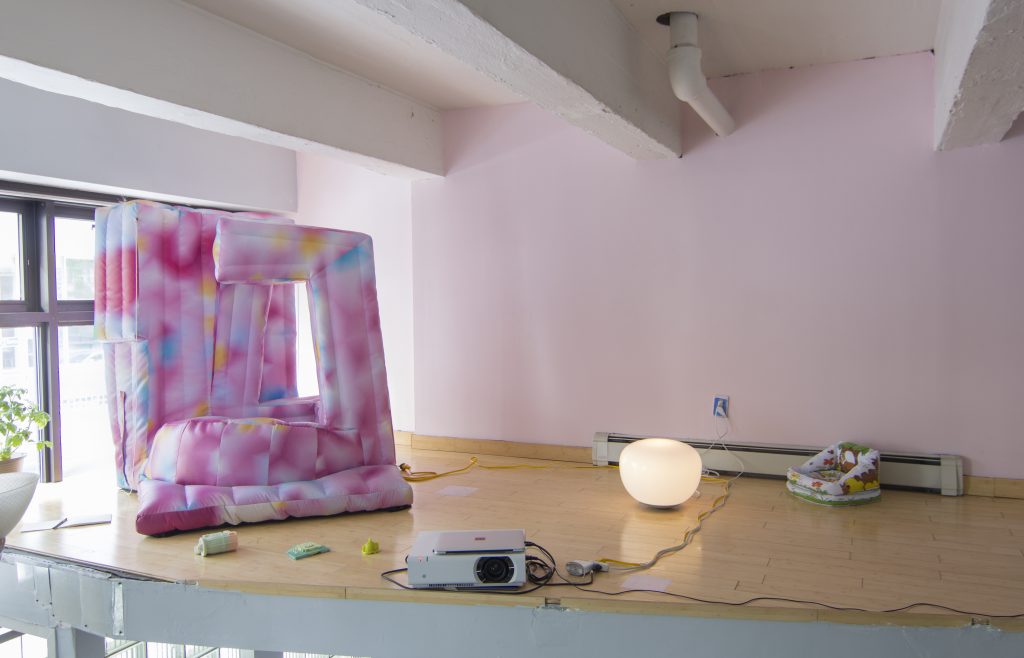
Installation view of “🏛🔀(@archmixes)” (2019) at YveYang Gallery where a tweet is translated into an inflatable. Courtesy of the artist and YveYang Gallery, New York.
How would you describe the way you work? Is it primarily research based and planned out, or do you also work spontaneously and intuitively?
I think of working as finding relationships between diverse artifacts or diverging situations. Research is more like the process of collecting images, bodily postures, or the capabilities of a new technique. But it’s when I take what I’ve collected and cheekily collage or stack them—put them into relation in materially spontaneous ways—that I’m able to make sense of them. In the @archmixes project, I was collecting 3D models of starchitectural icons made by users online, but it was realizing that I could make a tool that lived on Twitter for anyone to collide these models that propelled me forward.
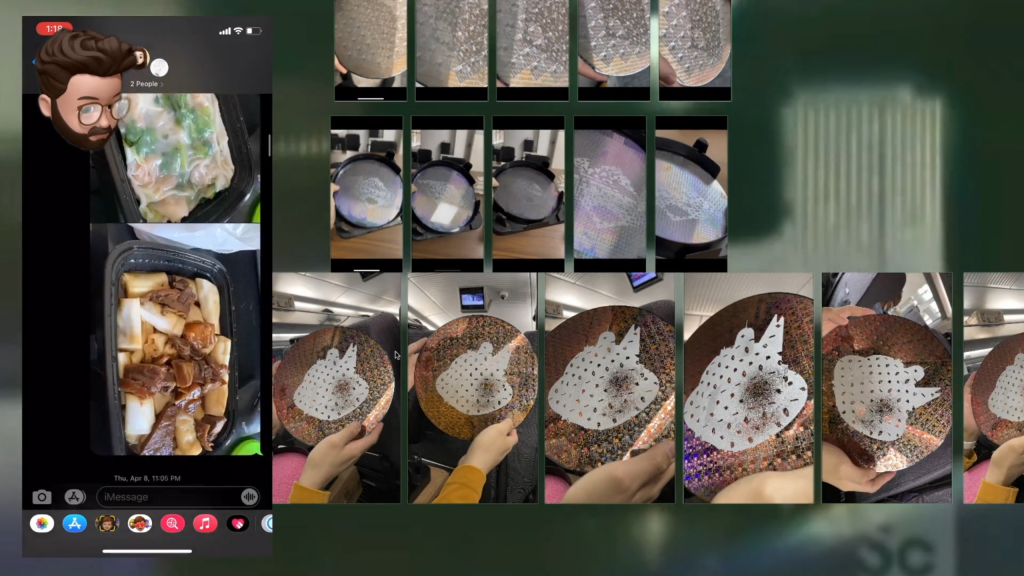
Sam Ghantous, still from Work-Space Portrait (2021). Photo: Sam Ghantous. Courtesy of the artist and YveYang Gallery, New York.
Your piece Work-Space Portrait (2021) is being shown as part of “The Path Toward Metaverse” series organized by Art Basel Hong Kong this month. Can you tell us about the work and what inspired it?
Work-Space Portrait is a video essay that accompanies a series of prints on silicon wafers. Wafers are mesmerizing iridescent disks on which microchips are printed at the nanometer scale. I reflect on printing the series remotely during the pandemic by surveying my digital workspaces like the canvas site Miro, which is where I was gathering images. This tour of images is superimposed on videos I was watching, and I expose my text messages and time tracking app. It’s a bio-data-diary that captures the ways our digital interfaces are bridges to faraway places, but also to ourselves and our sense of productivity.
What do you see as the role of art in society today?
As a point of reflection and imagination for how we live and work together. This is particularly relevant to me given how our technologies claim to connect us, but often do the exact opposite. Art can complicate our views of gathering, make them evident, or suggest alternative imaginary realities. Reflecting Pool, which I collaborated on with Bjørn Sparrman, is a bench for gathering and a pool of digital screens that reflects you and whoever you may be with, in a shared digital skin of sorts.
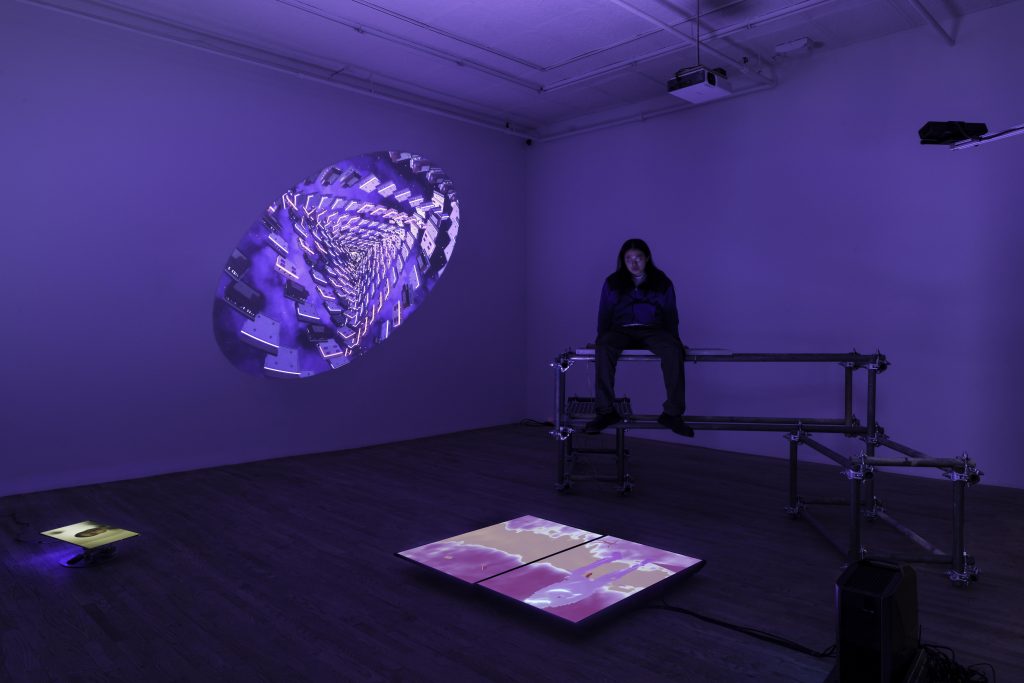
Installation view of Sam Ghantous, Reflecting Pool (2019), with Bjørn Sparrman at Postmasters Gallery. Courtesy of the artist and YveYang Gallery.
Are there any artists, architects, or designers—historical or contemporary—that you would cite as influences? Or, alternatively, as sources of inspiration?
More importantly than singular figures I think about historical moments where ideas and mediums influenced one another to expand possibilities for artists. I’m in Florence this week and thinking about how in the 1970’s, “Radical” Italian architects, designers, and critics made speculative images, furniture, and scenarios as ways to reflect on the future of cities. Other examples include how the Internet became a site for artists to play with how we connect with each other and with information, or how the sampler helped electronic musicians reuse fragments of existing tunes to make their own.
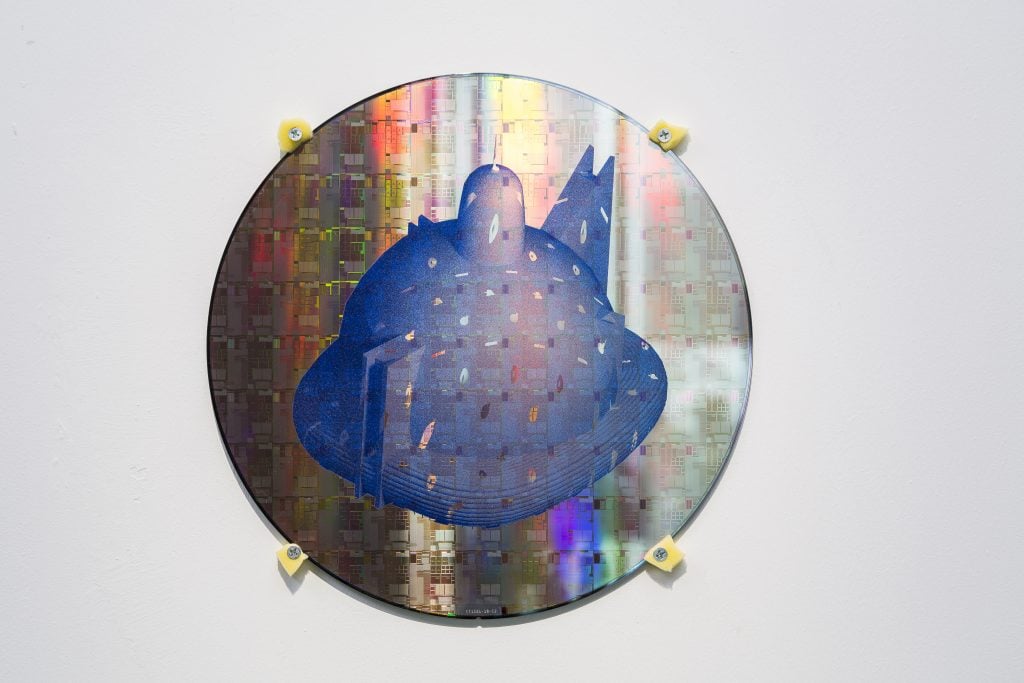
View of Sam Ghantous, @archmixes wafers (2021), at Oōeli Park, Hangzhou. Courtesy of the artist and YveYang Gallery, New York.
Can you tell us about something you are working on currently, or plan to work on soon?
Following my interest in silicon wafers I am looking more broadly at the silica or sand that makes our digital and physical infrastructures. I’ve been understanding how sand moves around the world in order to shape those infrastructures, whether it ends up in golf courses in Georgia, artificial islands in Dubai, microchip manufacturing in Taiwan, or extraction sites in Norway. Using the language of tourism, I smudge together imagery from industry and leisure while reflecting on the myths we make about progress and the costs this comes with. I am preparing this as a solo and dual show in different cities with YveYang Gallery.